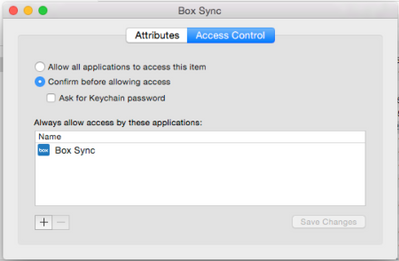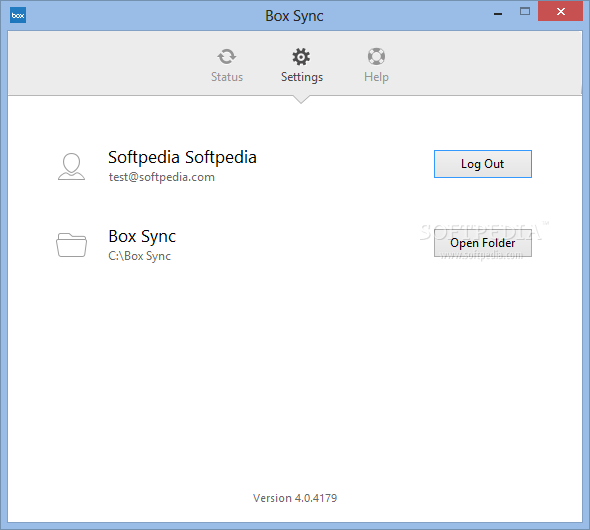

- BOX SYNC PROBLEMS HOW TO
- BOX SYNC PROBLEMS INSTALL
- BOX SYNC PROBLEMS OFFLINE
- BOX SYNC PROBLEMS DOWNLOAD
- BOX SYNC PROBLEMS WINDOWS
BOX SYNC PROBLEMS WINDOWS
Windows Vista and later versions: C:\Users\\AppData\Local\Microsoft\Outlook Windows XP: C:\Documents and Settings\\Local Settings\Application Data\Microsoft\Outlook Locate the following folder, as appropriate for the operating system that you are running: The tool does not interact with your mailbox on the Exchange Server. The tool also tries to repair the internal data structures, if it is necessary. pst file and makes sure that the file structure is intact. ost files and on Personal Folders (.pst) files. The Inbox Repair tool can be used on both. ost file, you can use the Inbox Repair tool (Scanpst.exe) to diagnose and repair errors in your. If you have problems when you try to open your. Any problems are noted in a message that has "OST Integrity Check" as its Subject. The tool does not scan the Deleted Items folder.

To view the scan log, start Outlook, and then open the Deleted Items folder. However, the tool does not make the necessary corrections. If this check box is cleared, the tool logs the problems. To have the tool automatically resolve differences that it finds during the scan, select the Repair Errors check box. If you are prompted to Connect or to Work Offline, select Connect. In the Profile Name list, select the profile that contains the.

If you have set up Outlook to prompt you for a profile, the tool also prompts you for a profile.
BOX SYNC PROBLEMS HOW TO
The LCID for English - United States is 1033.įor Outlook 2007: drive:\Program Files\Microsoft Office\OFFICE12 How to repair errors by using Scanost.exeĮxit Outlook 2003 or Outlook 2007 if it is running. Be aware that in this example, LocaleID is the locale identifier (LCID) for the installation of Microsoft Office.
BOX SYNC PROBLEMS INSTALL
The OST Integrity Check Tool (Scanost.exe) is installed when you install Outlook in the following locations, as appropriate for the Outlook version that you are running.įor Outlook 2003: drive:\Program Files\Common Files\System\MSMAPI\ LocaleID folder. The scan log is in your Deleted Items folder. The scan log also identifies any situations that the tool could not resolve and that you must fix manually. The tool records any differences in a scan log so that you can see what differences the tool found and resolved. The OST Integrity Check Tool does not change your mailbox on the Exchange Server. The tool compares items and folders in the file and in your mailbox and tries to reconcile synchronization differences between the files and the mailbox. ost file and your mailbox on an Exchange Server. ost files and can be used to diagnose and repair synchronization issues. The OST Integrity Check Tool runs only on. To access this option, select the File tab, and then select the Open option. pst file data by using the Do not import duplicates option.
BOX SYNC PROBLEMS DOWNLOAD
BOX SYNC PROBLEMS OFFLINE
Select Clear Offline Items, and then select OK.Right-click the folder, and then select Properties.If there is an issue with a specific folder, you can resync the folder in Outlook. This tool was recommended in earlier versions to fix errors in Outlook data files (.ost). The OST Integrity Check Tool (scanost.exe) is not included in Outlook 2010 and later versions. Use the OST Integrity Check Tool (Scanost.exe) to check your. When these symptoms occur, or you have other problems synchronizing, the problem might be a corrupted. ost file or from your mailbox after you synchronize your. You notice that some items such as email messages, appointments, contacts, tasks, journal entries, notes, posted items, and documents are missing from your. The file c:\Users\\AppData\Local\Microsoft\Outlook is not an Outlook data file (ost). The error message may resemble the following:Ĭannot start Microsoft Outlook. Occasionally you receive an error message when you synchronize your Offline Folder file (.ost) in Outlook with your mailbox on a server that is running Microsoft Exchange Server. You have an issue with Outlook, but the issue does not occur when cached mode is disabled. You see differences or mismatches between the messages that you receive in Microsoft Outlook compared to Microsoft Outlook Web App. When synchronization issues occur in Microsoft Outlook or in Microsoft Outlook Web App (formerly Outlook Web Access), you may experience the following symptoms.


 0 kommentar(er)
0 kommentar(er)
